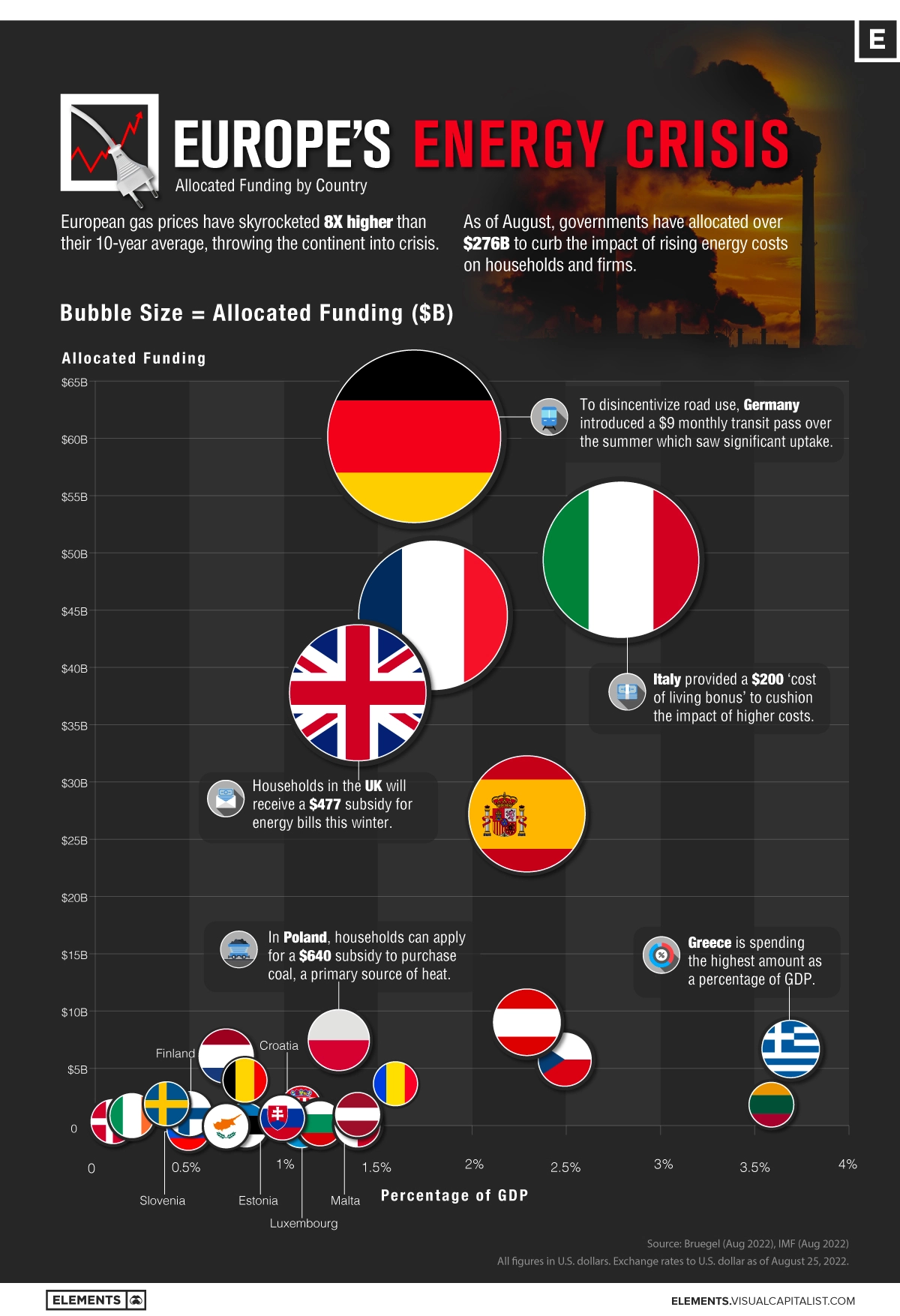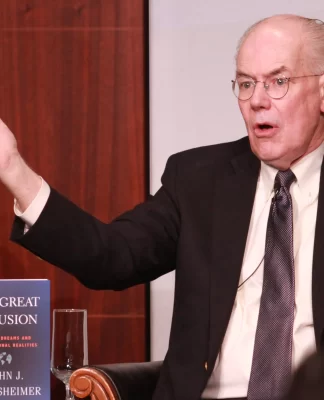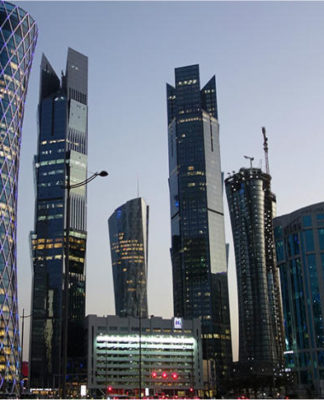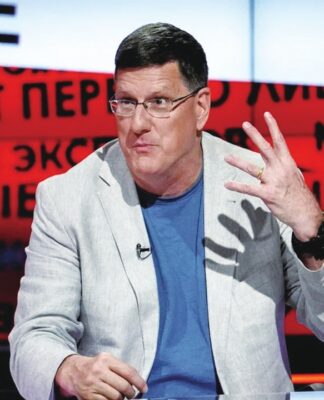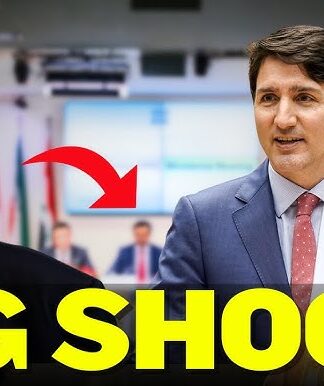ENERGYWhat is the Cost of Europe’s Energy Crisis?Published 1 day ago on September 23, 2022
By Dorothy Neufeld
Graphics/Design:
Sam Parker
Tweet
Share
Share
Reddit
Email
Subscribe to the Elements free mailing list for more like this
What is the Cost of Europe’s Energy Crisis?
What is the Cost of Europe’s Energy Crisis?
This was originally posted on Elements. Sign up to the free mailing list to get beautiful visualizations on natural resource megatrends in your email every week.
Europe is scrambling to cut its reliance on Russian fossil fuels.
As European gas prices soar eight times their 10-year average, countries are introducing policies to curb the impact of rising prices on households and businesses. These include everything from the cost of living subsidies to wholesale price regulation. Overall, funding for such initiatives has reached $276 billion as of August.
With the continent thrown into uncertainty, the above chart shows allocated funding by country in response to the energy crisis.
The Energy Crisis, In Numbers
Using data from Bruegel, the below table reflects spending on national policies, regulation, and subsidies in response to the energy crisis for select European countries between September 2021 and July 2022. All figures in U.S. dollars.
Show
10
entriesSearch:
Country Allocated Funding Percentage of GDP Household Energy Spending,
Average Percentage
🇩🇪 Germany $60.2B 1.7% 9.9%
🇮🇹 Italy $49.5B 2.8% 10.3%
🇫🇷 France $44.7B 1.8% 8.5%
🇬🇧 U.K. $37.9B 1.4% 11.3%
🇪🇸 Spain $27.3B 2.3% 8.9%
🇦🇹 Austria $9.1B 2.3% 8.9%
🇵🇱 Poland $7.6B 1.3% 12.9%
🇬🇷 Greece $6.8B 3.7% 9.9%
🇳🇱 Netherlands $6.2B 0.7% 8.6%
🇨🇿 Czech Republic $5.9B 2.5% 16.1%
Showing 1 to 10 of 26 entriesPreviousNext
Source: Bruegel, IMF. Euro and pound sterling exchange rates to U.S. dollar as of August 25, 2022.
Germany is spending over $60 billion to combat rising energy prices. Key measures include a $300 one-off energy allowance for workers, in addition to $147 million in funding for low-income families. Still, energy costs are forecasted to increase by an additional $500 this year for households.
In Italy, workers and pensioners will receive a $200 cost of living bonus. Additional measures, such as tax credits for industries with high energy usage were introduced, including a $800 million fund for the automotive sector.
With energy bills predicted to increase three-fold over the winter, households in the U.K. will receive a $477 subsidy in the winter to help cover electricity costs.
Meanwhile, many Eastern European countries—whose households spend a higher percentage of their income on energy costs— are spending more on the energy crisis as a percentage of GDP. Greece is spending the highest, at 3.7% of GDP.
Utility Bailouts
Energy crisis spending is also extending to massive utility bailouts.
Uniper, a German utility firm, received $15 billion in support, with the government acquiring a 30% stake in the company. It is one of the largest bailouts in the country’s history. Since the initial bailout, Uniper has requested an additional $4 billion in funding.
Not only that, Wien Energie, Austria’s largest energy company, received a €2 billion line of credit as electricity prices have skyrocketed.
Deepening Crisis
Is this the tip of the iceberg? To offset the impact of high gas prices, European ministers are discussing even more tools throughout September in response to a threatening energy crisis.
To reign in the impact of high gas prices on the price of power, European leaders are considering a price ceiling on Russian gas imports and temporary price caps on gas used for generating electricity, among others.
Price caps on renewables and nuclear were also suggested.
Given the depth of the situation, the chief executive of Shell said that the energy crisis in Europe would extend beyond this winter, if not for several years.









